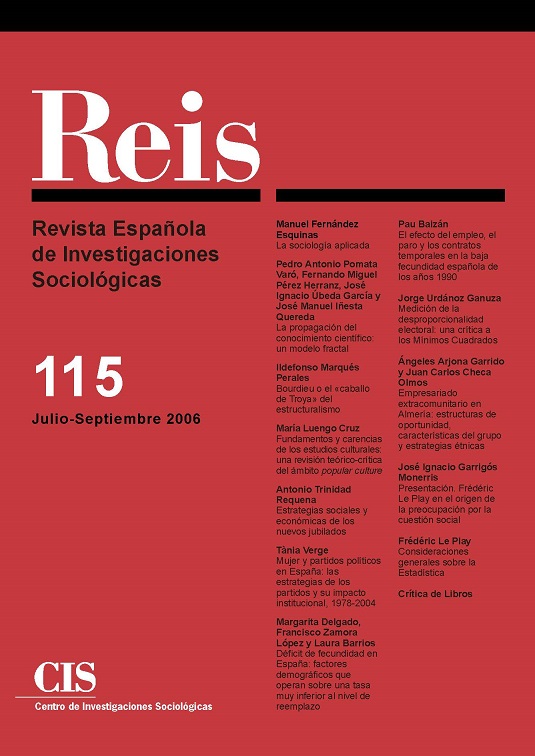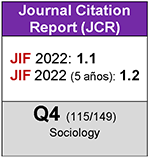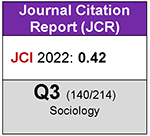Fertility deficit in Spain: demographic factors that lower rates to far below the replacement level
DOI:
https://doi.org/10.5477/cis/reis.115.197Keywords:
Fertility, Births, Motherhood, Regression Models, SpainAbstract
The sharp decline in fertility recorded in Spain in the last few decades is the outcome of a number of factors, one of the most relevant being the average age at first maternity, which has climbed by four years since the mid-1970s. This leads to increasingly
unfavourable ratios between higher order and overall fertility. In the present paper, a regression model in which 99% of the variance could be accounted for was used to establish the relationship between variables and simulate several scenarios. The chief conclusion is that with the age at first birth patterns prevailing today, replacement level fertility cannot be achieved. Indeed, age at first child would have drop even to reach values of over 1.5: naturally, the higher the desired fertility rate, the lower the age required, since the age at which mothers have their first child determines the combination of birth orders, which in turn has an impact on the resulting fertility.
Downloads
Downloads
Published
How to Cite
Issue
Section
License
Copyright (c) 2024 Revista Española de Investigaciones Sociológicas

This work is licensed under a Creative Commons Attribution-ShareAlike 4.0 International License.
Permite Compartir — copiar y redistribuir el material en cualquier medio o formato, Adaptar — remezclar, transformar y construir a partir del material para cualquier propósito, incluso comercialmente.








